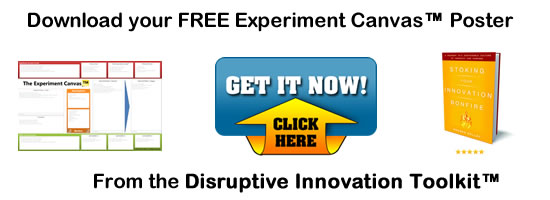How 3 Established Brands Unlocked New Growth [Case Study]

How do they do it? Those big brands that dominate across multiple aisles. It’s hard enough to win in a single category, let alone enter adjacent categories and have success there, too.
Many brands attempt to enter new segments or categories and flop. So what makes a success story a success?
One thing that all great expansion case studies have in common is that the brand defined their frame of reference to their own advantage. You can do this for your brand, too. Read on for an explanation, three notable case studies, and a downloadable eBook pdf.
What is Competitive Frame of Reference in Marketing?
In the simplest terms, the frame of reference defines the market in which you compete. It’s part of brand positioning and is one of the most important strategic choices a business can make.
Here are a few questions you can ask yourself to help come up with your frame of reference:
- Who/what do you sit next to on shelf?
- What’s the mental set of products/services that you fit into in the consumer’s/customer’s mind?
- Between what products/services do your customers choose between in order to arrive at your brand?
- What are your competitive substitutes, direct and indirect?
- Which markets do you take share/draw volume from?
- Against which categories/competition could you win if you positioned against them?
There are many ways to grow a brand (e.g., new targets, new geographies, etc.). But changing your frame of reference specifically means narrowing or expanding the categories in which you compete.
Why narrow? Why not always expand? If you’ve become diluted, you’re competing on too many fronts, or you’ve been unsuccessful (often due to too broad of brand definition), you may want to focus on fewer markets. Less can be more. GE is a good example of a brand that, in recent years, has decided to pursue a narrower focus (on industrial markets) to position the company and brand for long-term success.
Expand Your Competitive Frame for Incremental Growth
Also known as domain expansion or category expansion, expanding your competitive frame is attractive for its incremental growth potential. But a strong position in your current market is required in order to be successful. Too many brands attempt to expand from a position of weakness, and this results in a weak position in the new category as well.
How do you know if your brand is ready for a new category? Do you have a strong enough existing position to expand from? Successful brands typically meet two requirements in their current category before expanding:
- Significantly high market share (near leadership or maximum share)
- A very strong, specific brand equity that is also relevant in adjacent/non-adjacent categories
Don’t be fooled into adding numerous equities to your list. Successful brands define their core equity narrowly in order to compete broadly. It seems counterintuitive, but studies have actually shown that the narrower the mental association with the brand, the stronger that association is. This leads to stronger brand position in consumer minds across all categories in which the brand competes.
Here are three example case studies of brands that have successfully expanded their frame of reference using very specific equities.
CASE STUDY 1: ARM & HAMMER

From the 1920s to the 1960s, Arm & Hammer grew by promoting alternative uses for baking soda (bath, body, teeth, etc.). But, changing the brand’s frame of reference from baking soda to deodorizer opened up an entirely new avenue for growth. Around the 1970s, the brand began entering new product categories.
From the 1970s through the turn of the century, the domains that the brand expanded into were ones where a deodorizing benefit proved to be highly relevant—categories like laundry detergent, pet care, oral care… even diaper pails.
In recent years, it seems the brand has made a choice to move beyond deodorization. Arm & Hammer now emphasizes the “power of baking soda,†touting baking soda as a miracle ingredient with multiple benefits including deodorizing, cleaning and drying. This has given them room to enter new categories such as nasal cleansing, wound care and drying sprays.
It may seem like they’ve simply gone back to their roots. But there’s an important difference. Positioning baking soda as a miracle ingredient as opposed to miracle product allows the brand to continue to play across domains.
CASE STUDY 2: AXE

Launched in Europe in the 1980s, Axe quickly grew across global markets in the 90s, entered the USA in 2002, and is now the #1 men’s fragrance brand in the world (Euromonitor via Unilever). The brand began with body fragrance, with a tight equity: smell good, get the girl. This equity was reinforced with early expansions into deodorants and shower gels.
However, looking at Axe today, they provide a broad range of grooming products around a new equity: be attractive. This is evident in recent communication campaigns such as Get the Magic.
Here is the Axe launch timeline for the USA. You can see the distinct shift occurred between 2005 and 2009:
- 2002—body fragrance
- 2004—antiperspirant/deodorant
- 2005—body wash
- 2009—hair care
- 2013—facial care (cleansing, shaving)
Axe is a brand to keep an eye on. I would argue that their more recent attractive equity makes them more similar to most other male beauty brands that are already out there. I’m interested to see if they will have continued success with this broader equity versus the previous tighter focus on smell good.
CASE STUDY 3: TIDE

Tide laundry detergent launched in the 1940s and has been America’s best seller ever since. Follow-ups to the initial launch included Tide XK (1968), Liquid Tide (1984), Tide with Bleach (1988), Ultra Liquid Tide (1992), and Tide Coldwater (2005).
After spending years building equity in fabric cleaning (e.g., If it’s gotta be Clean, it’s gotta be Tide), the Tide brand began expanding outside of laundry detergent. Tide used its strong equity in fabric cleaning to launch Tide to Go pen (2005). And a new category format was also developed in Tide Pods (2012).
While Tide owned clean in the minds of consumers, a shift in their frame of reference to fabric care allowed Tide to pursue new territory. This included new segments within laundry detergent as well as expanded domains outside of detergent. Innovation such as Color Guard, Total Care and even Tide Dry Cleaners followed. The common equity is helping bring out the best in fabrics.
Most recently, Tide is experimenting with farther out domains. Swash, a new system to refresh fabric and remove wrinkles, emerged in 2014. The product line of sprays and dryer sheets targets convenience-seeking consumers who want to quickly get their clothes ready to wear without doing the laundry.
A recent venture with Whirlpool also led to the launch of Tide Swash machines. These new devices serve as an alternative to the traditional washing machine.
Perhaps the most interesting launch is Tide Multi-purpose stain remover. The product is designed to clean fabrics as well as other hard and soft surfaces throughout the home.
So it seems Tide is at a strategic crossroad. Should they focus on cleaning as their core brand equity? Fabric care? Or something new that allows them to play competitively across surface and fabric care? We shall see.
Where to Start?
If you are considering expanding into new domains, one of the first questions you should ask is if your brand is ready (see the two questions earlier in this article).
If you believe the brand is ready, the next step is to define the equity you’ll leverage for expansion. You may have more than one option, in which case consumer research can help you evaluate the potential of each equity and see where consumer permission lies.
In your research, talk to consumers about which equities are most closely associated with your brand. Then use that equity as the basis to generate a list of potential categories. Ask consumers which potential categories makes sense/are a good fit/are believable.
Then take your new, narrowed list and do deeper homework—competitive landscape, market dynamics, opportunity, right to win, etc.
This article originally appeared on Gurulocity
Wait! Before you go…
Choose how you want the latest innovation content delivered to you:
- Daily — RSS Feed — Email — Twitter — Facebook — Linkedin Today
- Weekly — Email Newsletter — Free Magazine — Linkedin Group
 Kevin Namaky is the Founder of Gurulocity marketing education. As a brand marketing leader and as Head of Strategy at a global consulting firm, he created billions in new value for companies big and small. Kevin founded Gurulocity to help small business owners and entrepreneurs hone their strategic marketing craft and unlock their potential. Connect with Kevin on LinkedIn and on Twitter @gurulocity
Kevin Namaky is the Founder of Gurulocity marketing education. As a brand marketing leader and as Head of Strategy at a global consulting firm, he created billions in new value for companies big and small. Kevin founded Gurulocity to help small business owners and entrepreneurs hone their strategic marketing craft and unlock their potential. Connect with Kevin on LinkedIn and on Twitter @gurulocity
NEVER MISS ANOTHER NEWSLETTER!
LATEST BLOGS
The Evil Downside of Gift Cards
This past holiday season I saw probably one too many articles trumpeting the value of gift cards to retailers and how they are a great thing for retailers. My skeptic side starts coming out as I see article after article appear, and I have to start asking “Is the increasing prevalence of gift cards as a holiday gift (primarily Christmas) a good thing for retailers?”
Read MoreWhy the iPhone will not succeed – Yet
The new Apple iPhone is set to launch on June 29, 2007 and the press and investors are making it a darling. Investors have run Apple’s stock price up from about $85 per share before its announcement to $125 per share recently, but the iPhone still will not succeed – at least not yet.
Read More



